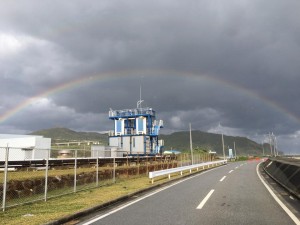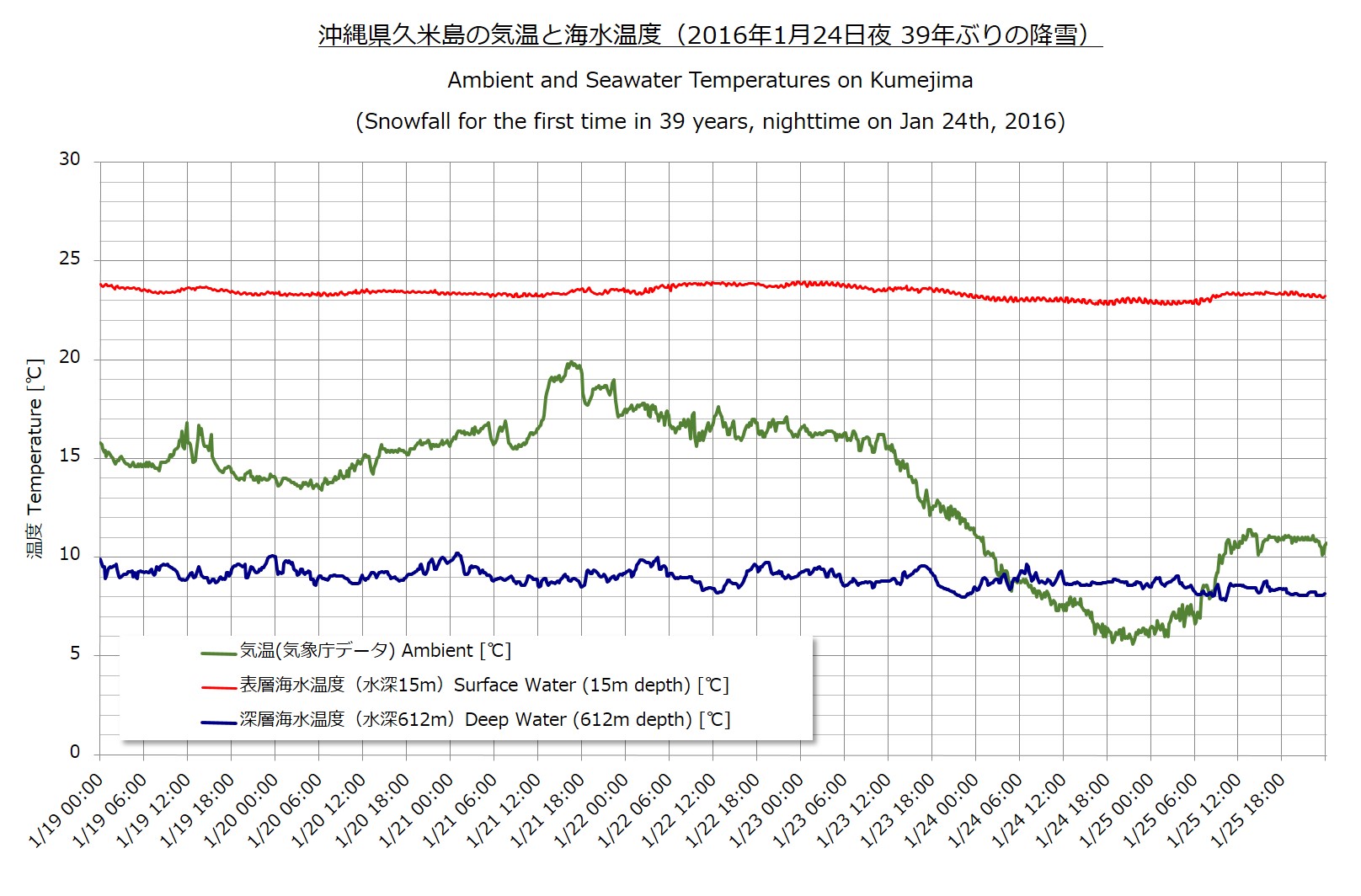 日本列島が大寒波に包まれた1月24日、久米島でも39年ぶりにみぞれが降りました。
日本列島が大寒波に包まれた1月24日、久米島でも39年ぶりにみぞれが降りました。
この日まで、沖縄県で降雪が観測されたことがあるのは久米島だけだったのですが、今回は本島の名護市でもみぞれが観測されました。沖縄「唯一」の冠が取れてしまって、少しだけ、残念です。
さて、この前日23日の昼間から24日の夜にかけて、久米島の気温は1日で10℃も下がりました。雪が降ったときの気温は、6℃未満。最低気温が5℃台になるのも29年ぶりです。
では海水の温度は何℃くらいまで下がっているのでしょうか?
OTEC実証設備では、沖縄県海洋深層水研究所で取水した表層海水(水深15m)と深層海水(水深612m)の水温を記録しています。
そのデータを一週間分、グラフにしてみました。

気温が10℃下がっても、表層海水の水温は1℃も下がらず、最低気温より17℃も高い23℃をキープしています。
海水の比熱は空気の約4倍、比重は約800倍。同じ体積で比べた場合、海水を1℃温めるのには、空気の3200倍の熱エネルギーが必要になります。つまり、温かい海水には大量の熱エネルギーが蓄えられているのです。そして、これがOTECの発電出力の安定性の源になっています。
そんなわけで、OTEC実証設備は、雪の中でも発電を続けています。
On January 24th, the same cold front that fell through the Eastern United States and Europe, also brought unusually low temperatures and snow throughout the Japanese archipelago. Until now, snow had only been observed in Okinawa Prefecture here on Kumejima, however, this time, measurable snow was also recorded on Okinawa for the first time, although it was only a little.
Between the afternoon of the 23rd and the evening of the 24th, the temperature on Kumejima fell 10°C. The temperature when the snow fell was less than 6°C (higher elevations on the island had lower temperatures than at the OTEC facility) with the lowest temperature recorded at the OTEC Facility of 5°C, the lowest temperature in 29 years.
With this unusual weather, we of course are interested in its affect on the sea temperature.
At the Okinawa OTEC Facility we record the incoming seawater temperature for both surface (15m) and deep seawater (612m). We include that data in the graph above. The red line indicates the surface seawater temperature, the blue line is the deep seawater, and the green line is the air temperature for a week.
As you can see, even from the peak air temperature of 17°C, the seawater maintained its temperature of about 23°C, not even changing 1°C through the 10°C temperature drop.
The specific heat of seawater is about 4 times greater than air, and the specific gravity is about 800 times greater. When comparing the same volume, you will need 3200 times more energy to warm seawater 1°C than air. In other words, seawater stores vast amounts of heat energy. This resource is the source of the stable power produced by Ocean Thermal Energy Conversion.
This is also why the Okinawa OTEC facility can still produce power, even when it snows.
